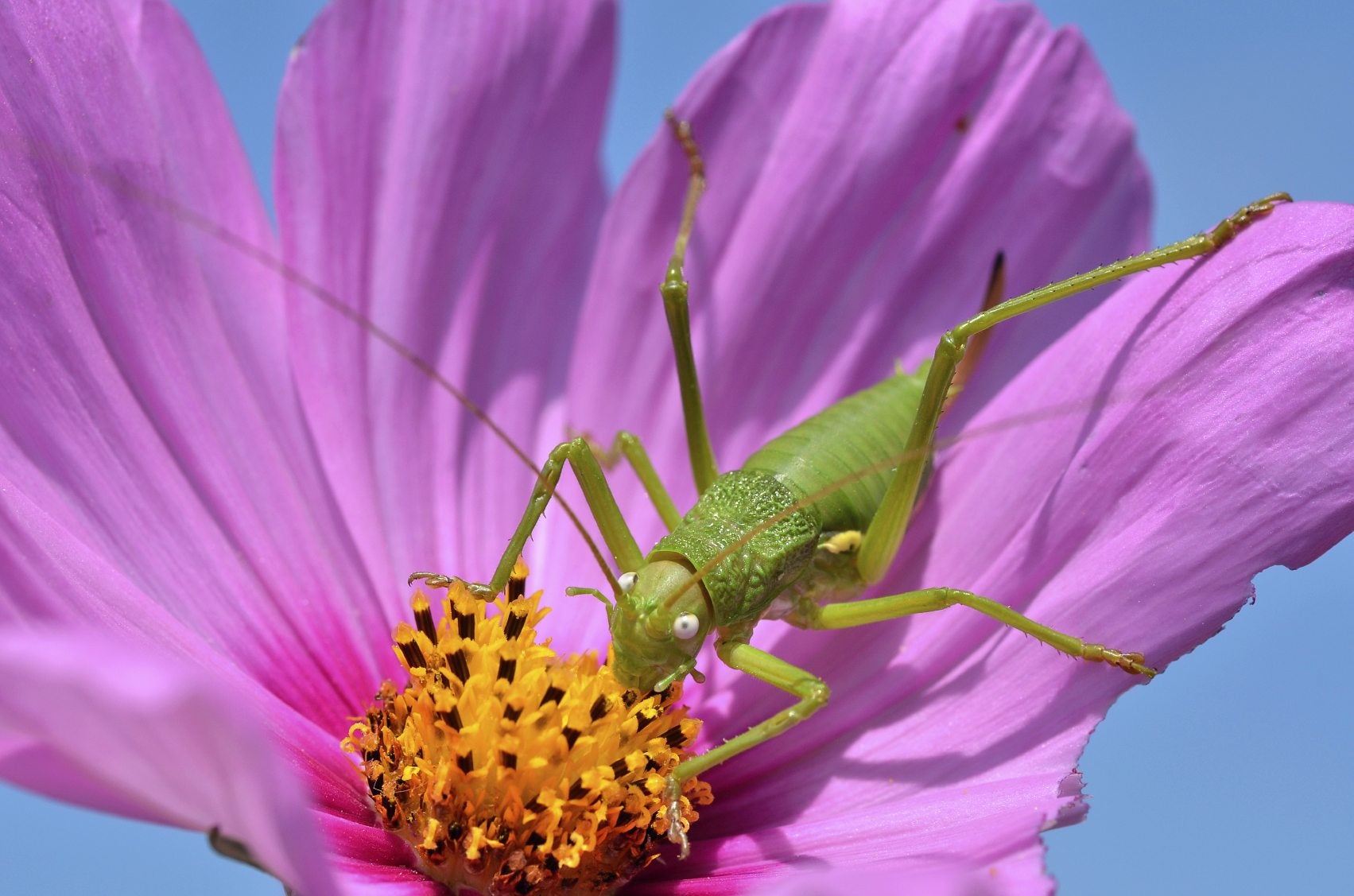Common Insects On Cosmos: Treating Pests On Cosmos Plants


There are over 26 species of cosmos. These Mexican natives produce cheery daisy-like blooms in an array of colors. Cosmos are hardy plants that prefer poor soil, and their easy-care nature makes them perfect plants for a sunny location in almost any garden. Cosmos plant pests are rare and generally don’t cause significant damage to the health of the plant. What pests do cosmos get? Learn about treating pests on cosmos plants to keep your flowers looking beautiful.
What Pests Do Cosmos Get?
Plant pests abound in spring and summer. Those that eat plant parts and suck sap can cause stunting, disfiguring, and loss of vigor in our beautiful landscape plants. Bugs that eat cosmos flowers can do successive damage to plants over time. These tiny marauders are often difficult to spot, but their feeding activities bring obvious results. Identifying the insects on cosmos can help control the pests and restore your plant to health. Cosmos self-seed, prefer infertile, difficult soil, and are fairly tolerant of low moisture. You really couldn’t ask for a more perfect, easy-care plant that brings vivid color to the landscape. However, even these tough beauties can be laid low by tiny insect pests. While many insects may nibble on cosmos now and again, like grasshoppers, the most common pests that set up their cafeterias in your plants are aphids, thrips, and Lygus plant bugs.
- Aphids – They are sucking insects that dine on plant sap. This can result in interruption of nutrients to parts of the plant and lowered vigor. Heavy feeding can also cause distorted and stunted new plant growth. Twisted leaves or unfinished flowers are common. These small insects are tiny but visible with the naked eye. Most often black, aphids also come in red, white, silver, brown, and other colors. Use a consistent plan of sprayed horticultural oil to combat the little beasties.
- Thrips – These are even smaller than aphids and are usual insects on cosmos. It is often not possible to see thrips as more than the dot of a pencil. If you see numerous tiny dots along the plant stems and leaves, you may be the lucky recipient of a thrip invasion. You can blast many of the pests off with bursts of water or use the horticultural soap spray.
- Lygus plant bugs – Also called true bugs, they have folded “x-shaped” wings on top of their backs. These are also sucking insects and are larger than thrips but still small. Their feeding behavior causes spots or stippling on foliage. Oils and soaps can be used against lygus plant bugs, but their feeding behavior doesn’t cause any true damage to plants, so an insecticide is not usually necessary.
How to Combat Insects on Cosmos
Many of the larger insects can be hand removed, but the tiny thrips and aphids pose a different problem. There are many insecticides you can try, but these add toxicity to the landscape and are, therefore, undesirable. Soaps and oils formulated for insect control are very useful but need to be consistently utilized. Rinsing plants works for a few hours but the bugs will still return. Consider planting species with cosmos that are not as susceptible to these bugs. Chrysanthemums and marigolds are two examples of plants that are unbothered by these pests and seem to have a natural ability to repel them. Utilize neem oil as a deterrent in the form of a foliar spray. This oil is naturally derived from a tree and repels or kills numerous insects in a safe manner.
Sign up for the Gardening Know How newsletter today and receive a free copy of our e-book "How to Grow Delicious Tomatoes".

Bonnie Grant is a professional landscaper with a Certification in Urban Gardening. She has been gardening and writing for 15 years. A former professional chef, she has a passion for edible landscaping.